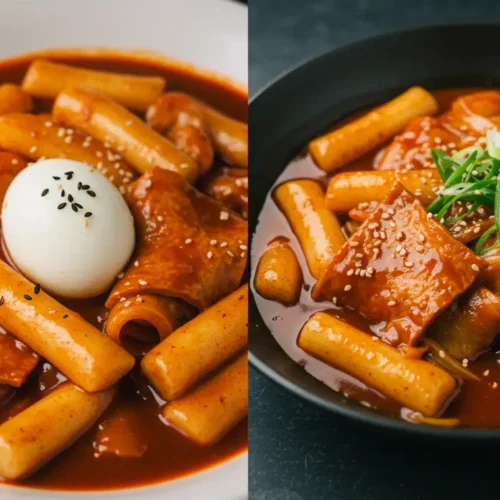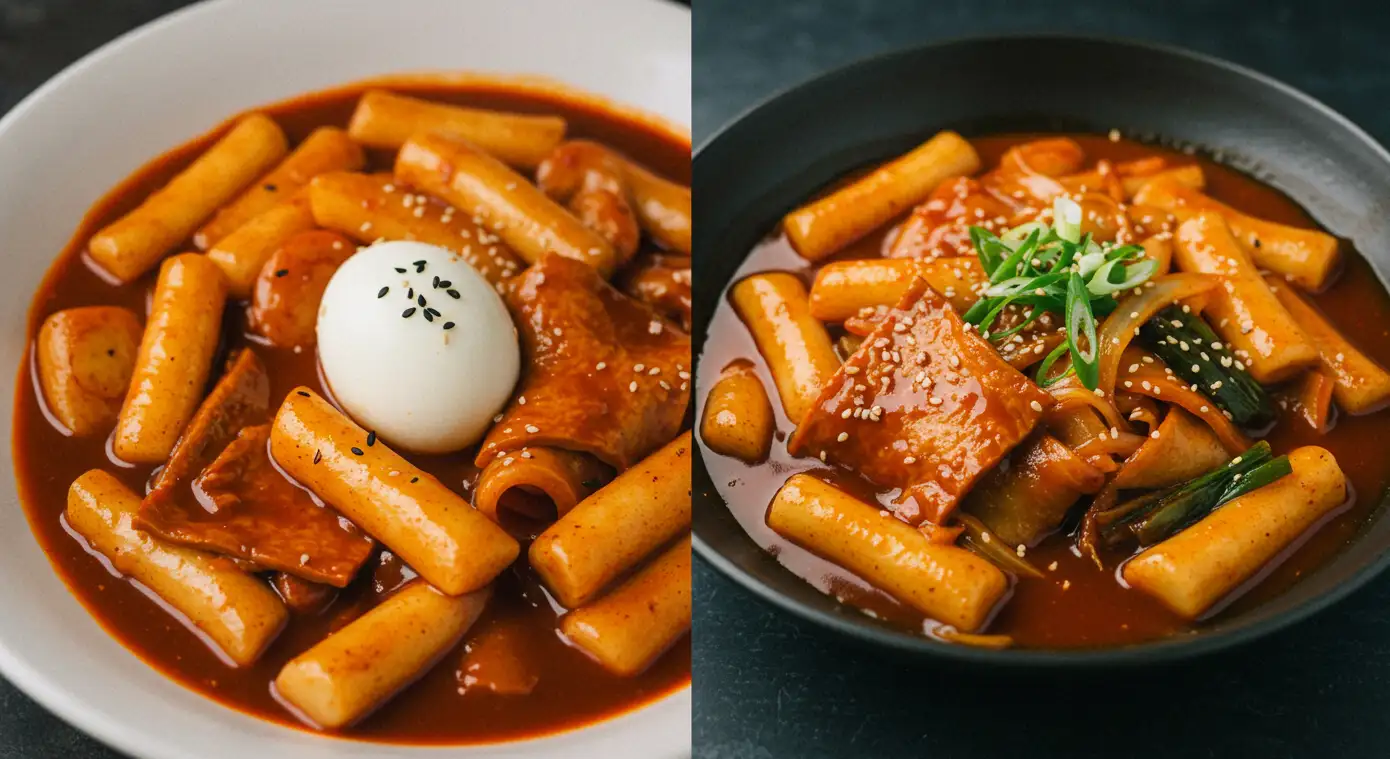If you’ve come across the terms “tteokbokki” and “topokki”, you might wonder: Are they the same dish, or do they represent different styles of Korean cuisine? This article will clarify the nuances and provide insights into this beloved Korean comfort food.
1. Tteokbokki vs. Topokki: What’s the Difference?
The terms “tteokbokki” and “topokki” are essentially the same and refer to a popular Korean dish made of chewy rice cakes (떡, tteok) simmered in a savory, often spicy sauce. The difference lies in the romanization of the Korean word “떡볶이.”
- Tteokbokki: This is the Revised Romanization system commonly used in Korea and internationally.
- Topokki: A simplified phonetic spelling often used by global brands or for marketing to make pronunciation easier for non-Korean speakers.
Despite the spelling variation, they refer to the same dish.
2. What Is Tteokbokki?
Historically, tteokbokki originated as a high-class royal dish in Korea, served in the 1800s with a soy-based sauce. Over time, it evolved into a street food staple, with spicy gochujang (Korean chili paste) becoming the dominant flavor profile in the 1950s.
Here are the typical ingredients for a homemade version:
- Rice cakes (떡볶이 떡)
- Fish cakes (어묵)
- Hard-boiled eggs
- Optional: Vegetables like cabbage or leeks
- A spicy sauce made with gochujang, soy sauce, and sugar.
3. Topokki: A Global Variation
“Topokki” often refers to instant or packaged versions of tteokbokki marketed globally. These versions are convenient and may feature slight taste adjustments to cater to international palates. For example:
- Less spice intensity
- Additional flavors like cheese, curry, or carbonara
- Pre-cooked or vacuum-packed rice cakes
While the essence of the dish remains the same, these variations make it accessible for quick preparation.

4. How to Make Authentic Tteokbokki
Ingredients
Ingredients:
- 10-12 10-12
- 2 fish cake sheets, sliced
- 2 hard-boiled eggs
- ½ medium onion, sliced
- 1 stalk leek, thinly sliced
- Optional: sliced cabbage
Sauce Mixture:
- 3 tablespoons gochujang
- 1 tablespoon ochugaru (chili powder)
- 1 tablespoon ochugaru (chili powder)
- 1 tablespoon ochugaru (chili powder)
- 1 teaspoon ochugaru (chili powder)
- 1 teaspoon ochugaru (chili powder)
Soup Stock:
- 3½ cups water
- 10-12 dried anchovies
- 1 piece dried kelp (2×2 inches)
Instructions
- Prepare the Soup Stock: Simmer water, anchovies, and kelp for 15 minutes. Discard solids.
- Mix the Sauce: Combine all sauce ingredients in a bowl.
- Cook the Base: Add 3 cups of stock, sauce mixture, onions, and leeks to a wok. Simmer for 5 minutes.
- Add Main Ingredients: Stir in rice cakes, fish cakes, eggs, and optional cabbage. Cook for 15 minutes until the sauce thickens.
- Serve: Enjoy as-is or with additional noodles like ramen or udon.
5. Which One Should You Choose?
- For Authenticity: Go with “tteokbokki” and try making it at home or finding it in Korean restaurants.
- For Convenience: Choose “topokki,” especially instant options, for a quick and easy introduction to the dish.
Conclusion
Whether you call it tteokbokki or topokki, this Korean dish is a culinary delight that combines chewy textures and bold flavors. Understanding the history and variations allows you to appreciate the rich culture behind it. So, why not try making your own or explore both authentic and instant versions?
Happy eating (잘 먹겠습니다)!

